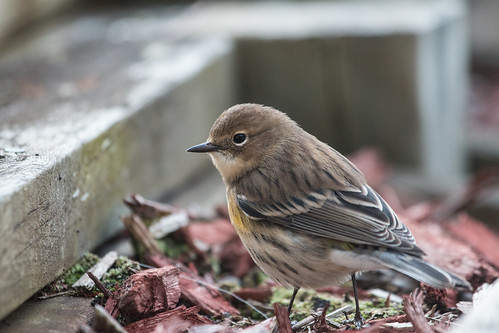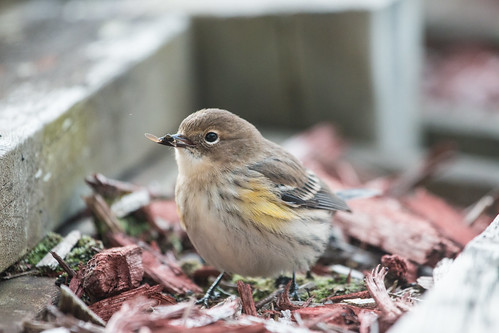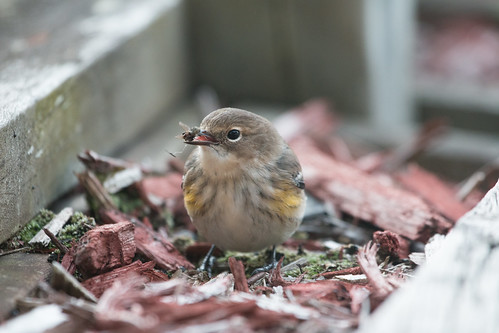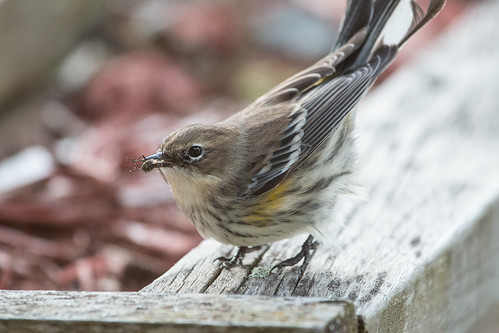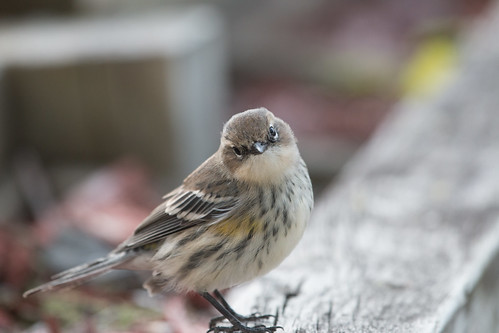During any migration fall-out, it’s easy to get overwhelmed
by the sheer numbers of birds. I described a huge songbird migration from when I was counting at the Lakewood Pumping Station in my 1994 book, For the Birds:
October 1, 1988, was the closest
I’ve ever come to wishing I’d never see another robin or warbler… Our five-hour
total … was 95,948 migrants, including 62,707 robins, 29,330 warblers, and a
smattering of longspurs, siskins, crows, ravens, geese, eagles, etc. If Kim
[Eckert] could have stayed [for the entire time], we would easily have topped
100,000. When I got home, still in a daze, I walked smack into a bag of
sunflower seeds. Sweeping them into a dustpan, I reached 738 before I realized
I was still counting.
This past week, Karl Bardon and Steve Kolbe, the official
counters at Hawk Ridge, counted in just three days 43,543 robins, 7,811 Rusty
Blackbirds, 405 flickers, and over 4,000 warblers.
Whenever we are dealing with
huge masses of birds, or even of people, we start thinking in terms of masses
or hordes, and it’s easy to forget that even the hugest crowds are made up of
individuals. But on Monday, one special Yellow-rumped Warbler reminded me of just how
unique and individual each bird is.
On October 6, I brought my mother-in-law to Port Wing,
Wisconsin, for her biweekly card club at the house of one of her friends. I
spent most of my time on a birding walk. The game took longer than usual,
so when I got back to the house, I spent a half hour at the window
watching at least six Yellow-rumped Warblers trying to find food on the deck.
Several
of them kept flying up to the windows—not colliding, but picking at insects in
the framing and occasionally trying to get some of the cluster flies that had
erupted on that sunny day. Most of the houses along Lake Superior get these
cluster fly outbreaks during sunny fall days. I’m not sure where the flies come
from or why the outbreaks are always indoors—these are not the same species as
the iridescent houseflies or bottle flies drawn to garbage. The flies always
gather at windows, and the warblers could see the movement, but unfortunately
it was mostly on the wrong side of the glass. They’d make a swipe or two, and
sometimes managed to grab one that was working its way outside from the bottom of the
window, but then they’d spot a bug somewhere else—on the grill, the deck
flooring, or in flight—and take off after that one.
Usually I’m a live-and-let-live kind of person, and so when
cluster flies gathered at my mother-in-law’s house, I’d open the window and
screen and send them off. But those hungry warblers made me lose all compassion for the poor flies—suddenly they were nothing more than food, and I found myself swatting at them. I’d scoop up a
dozen or so and put them in a flower box on the deck. Some of the flies were
merely stunned, and when they took off, one or another warbler would notice the movement and
snap them up in midair. But one little warbler took notice of the fact that the
flies were taking off from the flower box whenever I went over there. Within a few minutes, it was flying into the
box and gorging on flies the moment I went back indoors.
These little yellow-rumps started off in the Canadian and
northern Minnesota wilderness, and are headed to the southern states and some all the way to Central America. Between their summering and wintering grounds, they pass through a lot of unfamiliar habitats. Every single one of them will
have to fly over Interstate 80. They take off in the dark and fly all night,
and at the end of an exhausting flight can find themselves in all manner of unexpected places, from big cities to Iowa cornfields. And wherever they find themselves, these strangers in a strange land, they must figure out how to deal with the unfamiliar or they'll die.
Many people think of birds as avian
automatons, following instincts rather than reasoning, but as
that adaptable little yellow-rump showed me, these birds are more intelligent
than one would think. I felt sad leaving—if I’d had my druthers, I’d have spent
the rest of the day swatting flies and bringing them outside. Other
warblers would have made the connection to me, or followed the example of
the smart little one, and soon at least six yellow-rumps would have had
enough protein to rev them up for the night’s migration. But instead, all I could do is wish them, especially one endearing and unique little bird, a safe journey.

